
Jan 09, 2024
- Products & Solutions
- Press Release
- CES
- Home & Personal Solution
- Operating company
Feb 09, 2011
Products & Solutions / Blog Posts
Panasonic's management slogan for the 2010 fiscal year, "Unite Our Efforts, Drive Eco Innovation," was fully exemplified today in Tokyo by an announcement in collaboration with Tokyo Gas. To prove its continual strive for eco innovation, Panasonic announced a new and improved household fuel cell product "Ene-Farm" with the world's highest power generation efficiency(1) and will be on sale in Japan starting April 1, 2011.
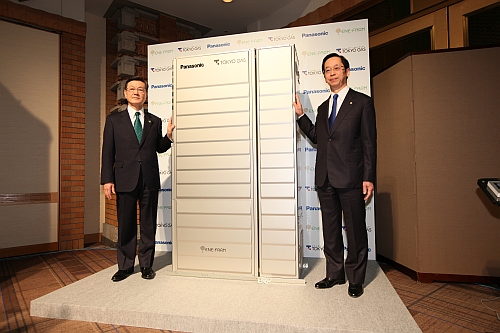
The "Ene-Farm" fuel cell is a co-generation system that produces electricity through a chemical reaction between oxygen in the atmosphere and hydrogen extracted from city gas. During the process, heat is produced as a byproduct and is 'eco-innovatively' used for home heating as well as for a hot water supply. Since the electricity is generated and used right from the home, there is no loss during transmission. Also, all heat produced during electricity generation can be used without waste. Compared to the conventional method of using electricity from a thermal power plant and hot water supply and heating using city gas(2), the fuel cell system allows primary energy consumption to be reduced by approximately 35%(3) and CO2 emissions by approximately 48%. Users can cut around 50,000-60,000 yen from annual utility bills, and CO2 emissions by approximately 1.5 tons(4) a year.

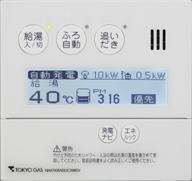
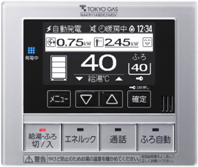
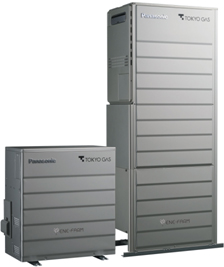
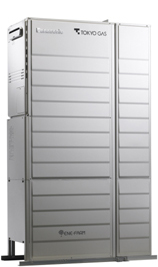
The name "Ene-Farm" was coined from the English words "energy" and "farm" to represent the core concept of this product - namely, that "we can generate our own energy to use in our own homes." The heat produced as a byproduct of the electricity generation can also be used effectively in floor heating, bathroom heaters, and for hot water supply. Tokyo Gas and Panasonic started the joint development of the product from 1999. In July 2003, the joint development contract was executed and by April 2005, the very first fuel cell co-generation system in the world was supplied to the Japanese Prime Minister's residence. Between 2005 and 2008, the pair engaged in a major nationwide project to test the products and obtain measurement data for actual usage conditions in normal people's homes. This then led to the world's first general launch of household fuel cell co-generation systems in May 2009.
1: For a home fuel cell co-generation system. (As of February 9, 2011, according to Panasonic survey.)
2: Method where electricity is supplied from a thermal power station, and gas supplied by Tokyo Gas is used for heating. Assuming use of gas-based water boiler, gas-based floor heating (living room), and electrical air-conditioners for heating/cooling all rooms bar living room.
3: Compared with the method (2) at a rated operation of electricity generation of 0.75kWh and heat recovery volume of 0.94kWh / approximately 32 liters at 40 degrees Celsius.
4: Conditions used in estimation are as follows:
The content in this website is accurate at the time of publication but may be subject to change without notice.
Please note therefore that these documents may not always contain the most up-to-date information.
Please note that German, French and Chinese versions are machine translations, so the quality and accuracy may vary.